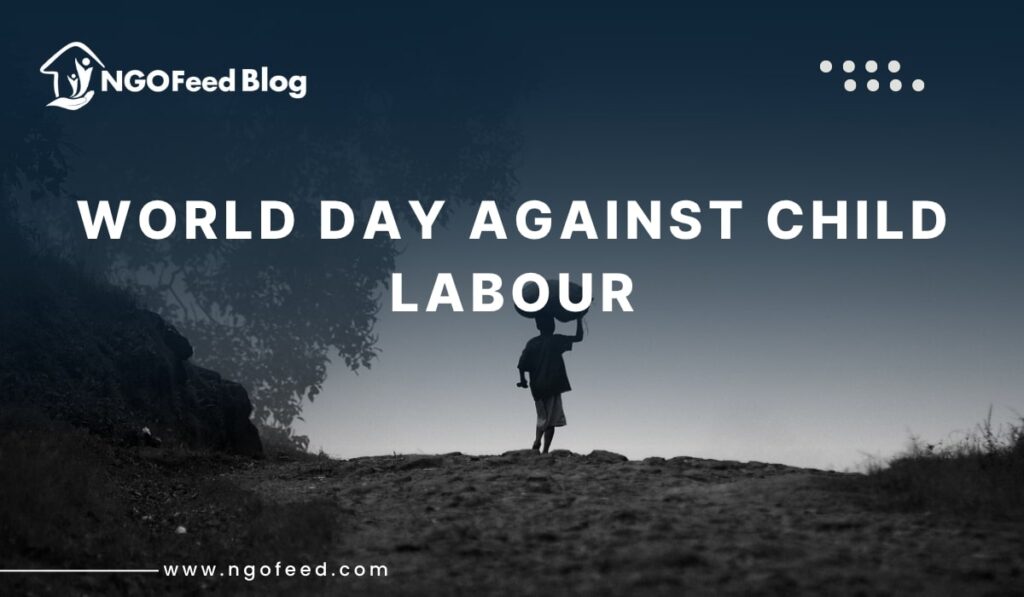Celebrated every year on June 12, World Day Against Child Labour helps to increase international awareness and inspire efforts to eradicate all kinds of child labor. The day draws awareness to the brutal truths many children endure, denied dignity, healthcare, and education, yet made to work in oppressive circumstances.
“Let’s act on our commitments: End Child Labour”
Table of Contents
World Day Against Child Labour: Origin and History
Following the acceptance of ILO Convention No. 182 on the Worst Forms of Child Labor in 1999, the International Labour Organization (ILO) started the day in 2002. The day has developed into a worldwide forum for lobbying, policymaking, and cooperation.
Celebrate It Because
- To emphasise the magnitude and intensity of child labor worldwide.
- To help companies and governments remember their promises to global conferences.
- Encouragement of programmes aimed at preventing child labour victims as well as reintegration and rehabilitation.
- To uphold youngsters’ right to a youth devoid of abuse.
World Day Against Child Labour 2025 theme
The 2025 theme is “Secure Futures, End Child Labour: Investing in Education and Livelihoods
By increasing family income security and access to excellent education, this year’s emphasis is on creating long-term solutions to break the poverty-labor spiral.
Also Read: Role of NGOs in Street Children
Grasping Child Labour
Child labour is work that steals children’s dignity, potential, and innocence, thereby damaging physical and psychological development. It differs from little domestic tasks or part-time employment that does not interfere with education.
Global Child Labour Trends
- According to ILO-UNICEF projections, still employed worldwide are 160 million children.
- Regional tensions and post-COVID financial hardship have undermined advances in some places.
- The greatest child labor prevalence is found in Sub-Saharan Africa.
- New exploitation venues in 2025 are developing in the digital gig economy and the informal online one.
Forms of Child Labour: Most Terrible
Defined under ILO Convention 182, these include:
- Trafficking and enslavement
- Recruitment for armed wars
- Making and trafficking of drugs
- Forced pornography and prostitution
- Exposure to dangerous chemicals, equipment, and harsh settings
Also Read: Role of NGOs in Anganwadi
Fundamental Elements and Causes
- Parent unemployment and poverty
- Lack of access to good education
- poor law enforcement
- Gender-based bias
- Norms of society that normalize child labour
Psychological and Health Effects
- Burn wounds, broken bones, and respiratory problems are among the physical injuries.
- Exposure to poisonous chemicals in mines and factories
- Depression, PTSD, and emotional trauma
- Interruption in social and cognitive growth
- High danger of exploitation and drug abuse
Child labor in supply chains:
- At the informal level, child labour is found in many worldwide supply chains, including textiles, cocoa, electronics, and agriculture.
- Brands need to perform supply chain audits.
- By demanding transparency and accountability, consumers help in this.
Also Read: Role of NGOs in Child Protection
International Regulations and Treaties
- ILO Convention No. 138: Convention on Minimum Age
- ILO Convention No. 182: Most Terrible Kinds of Child Labour
- UN Convention on Children’s Rights
- Target 8.7 of the Sustainable Development Goals (SDG): End child labour by 2025.
Contribution of the ILO
- Watching for adherence to global labour norms
- Giving nations technical help and capacity-building
- Operating the International Program on the Elimination of Child Labour (IPEC)
UNESCO, UNDP, UNICEF Role
- Child protection is integrated with education, WASH, and child rights by UNICEF.
- For families, UNDP backs income-generating projects.
- UNESCO encourages inclusive and resilient educational systems to stop dropout.
World Day Against Child Labour 2025: Overview of Indian Child Labour
- Though India has made strides, roughly 10 million children remain in labour (unofficial estimation).
- Areas: agricultural, bangle-making, domestic aid, brick kilns, street selling.
- Migration and caste inequities exacerbate the problem.
Legal Interventions by the Indian Government
- Child Labour ( Prohibition and Regulation) Act, 1986, as revised in 2016
- 2009 Right to Education Act
- National Child Labor Project (NCLP)
- Government helplines: 1098 (Childline); PENCIL portal
Encouraging Case Studies and Success Stories
- Bachpan Bachao Andolan’s Child-Friendly Villages, Bal Mitra Gram
- Thousands of people have been reconnected as a result of rescue efforts in Rajasthan, Bihar, and Uttar Pradesh.
- Global alliances such as Alliance 8.7 unite activity.
Effects of Migration and Climate Change
- School dropouts result from displacement caused by floods and droughts.
- Formal systems frequently render migrant children unseen.
- Children help to create income when families move.
Also Read: Role of NGOs in Child Welfare
Prevention as an Instrument of Education
- Midday meal programs help to lower school dropout rates.
- Bridge classes enable child labour survivors to return to school.
- Digital education has to be made fair and available.
NGOs, Faith-Based Organizations, and Youth Movements
- NGOs offer rescue, therapy, and skills training.
- Changing attitudes depends critically on religious and cultural leaders.
- Youth-led projects and campaigns magnify advocacy.
Role of Social Campaigns, Media, and Art
- Documents and short films have revealed bitter facts.
- Hashtags on social media like #EndChildLabour build a movement.
- Art therapy enables saved youngsters to communicate their pain.
Gender Dimension of Child Labor
- Particularly in cities, girls are frequently restricted to home slavery.
- Often overlapping with child labour is gender-based violence.
- Early marriages are also another kind of child abuse.
Also Read: Role of NGO in Human Rights
Disparities in urban and rural areas
- Agricultural, animal husbandry, and domestic manufacturing in rural areas
- Urban: homework, building, street selling
- For urban youngsters, who frequently lack documentation, intervention is challenging.
Technologies in the Fight Against Child Labour
- Geospatial mapping and artificial intelligence to spot hotspots
- Blockchain to confirm supply lines free of child labour
- Early detection is aided by reporting apps and school-tracking tools.
Companies can do what?
- Adopt strong child labour-free certifications.
- Encouragement of family wage policies will help to lessen the economic need for child labour.
- Support neighborhood training and education initiatives.
Actions and Personal Responsibilities
- Report suspected child labour to agencies or helplines.
- Support ethically sourced brands. Donate or volunteer with non-profit groups fighting for children’s rights
SDG 8.7 and beyond: Future Aims
- Ambitious and pressing is the 2025 objective to eradicate all child labour.
- Future aims need to focus on: Reintegration aid
Also Read: Role of NGOs in Disabled Person
Frequently Asked Questions (FAQs)
Q. How come child labor is still here?
Poverty, lack of education, and poor legal enforcement are factors.
Q. What constitutes child labour?
According to ILO, a child is anyone under 18. Under-14 labor is unlawful in most Indian industries.
Q. Is it against the law for children to work at all?
Not always. In some nations, light, non-harmful activity not interrupt study may be permitted.
Conclusion
World Day Against Child Labour is a stark reminder of the work still to be done to make sure every child has a safe, healthy, and meaningful childhood. The difficulty continues in several forms, both seen and unseen, notwithstanding legal systems and worldwide initiatives.
Also Read: Role of NGOs in Mental Health
Eliminating child labour calls for concerted efforts, education, economic change, and most crucially, compassion. Government, companies, educators, and citizens all share moral obligation.
Every rescued child, every protected right, and every reintegrated student is a step forward toward a compassionate, fair, and sustainable future.



